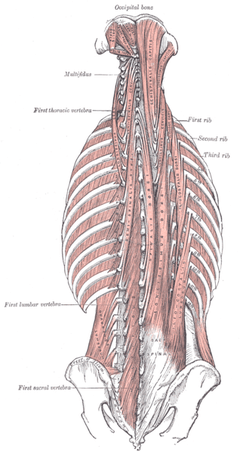SPINAL TENDINOSIS

If you think that differentiating between Spinal Tendinitis and Spinal Tendinosis is mere semantics, please spend a couple of minutes on our TENDINITIS -vs- TENDINOSIS page. Although most people never think of the spine as place to potentially develop Tendinosis, it is more common than most people think — far more common. This begs the question of why. What gives a muscle the potential to develop a Tendinopathy? The simple fact that it has a tendon. Of course all muscles have tendons — it’s the tissue that anchors or “connects” them to the skeleton. Thus the name “Connective Tissue” applies to tendons. And on top of this, many of the muscles of the back, neck, trunk, or torso, are not really just “one” muscle, but thousands of tiny muscles — with thousands of tiny tendons. Allow me to explain.
Let’s use the Spinal Erectors as an example. The muscles that doctors generically refer to as the “Spinal Erectors” or Erector Spinae are actually made up of several different muscles. And each one of these different muscles has dozens (sometimes hundreds) of parts to it. On top of that, each individual part has its own tendinous attachment point. When you look at the picture above, notice the amazing number of tendons. And remember that they are just showing a small portion of this muscle. And this is not even touching on the THORACOLUMBAR FASCIA.
